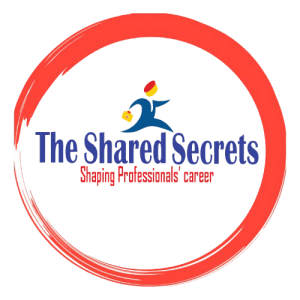Introduction
When it comes to job hunting, your resume is your golden ticket to landing an interview. But crafting a resume that stands out in a sea of applications isn’t easy. There’s more to it than simply listing your past jobs and hoping for the best. The real challenge lies in understanding “Resume Writing Secrets” and what recruiters are really looking for. With the right strategies, you can create a professional resume that not only captures attention but also propels you forward in your job search.
The Importance of a Strong Resume
Your resume is often the first impression you make on a potential employer. In today’s competitive job market, it’s crucial that your resume speaks volumes about your qualifications and your potential as an employee. Professional resume writing is not just about filling in the blanks—it’s about showcasing your career in the best possible light. A well-crafted resume can be the difference between landing your dream job or getting lost in the shuffle.
Understanding What Recruiters Want
To write an effective resume, you need to think like a recruiter. What do they look for when they skim through hundreds of resumes? Recruiters are searching for candidates who not only meet the job requirements but also bring something unique to the table. They want to see clarity, relevance, and a professional resume format that makes their job easier. By understanding their perspective, you can tailor your resume to meet and exceed these expectations.
Section 1: The Basics of Professional Resume Writing
What is Professional Resume Writing?
Professional resume writing involves more than just listing your employment history. It’s about strategically presenting your skills, experience, and achievements in a way that aligns with the job you’re applying for. This process includes everything from choosing the right resume format to ensuring that your resume is ATS (Applicant Tracking System) friendly. When done correctly, professional resume writing can significantly enhance your chances of getting noticed in your job search.
Resume Format: The Foundation of Success
Choosing the right resume format is the foundation of a successful job application. There are three main types of resume formats:
- Chronological Resume: Focuses on your work history, listing your most recent position first. This is ideal if you have a strong work history in the same field.
- Functional Resume: Emphasizes skills and experience rather than the timeline of your work history. Best for those changing careers or with gaps in their employment.
- Combination Resume: A blend of chronological and functional formats. It highlights both your skills and work history.
Selecting the right format based on your experience and the job you’re applying for can greatly influence how your resume is received.
The Power of ATS Resumes
Many companies use Applicant Tracking Systems (ATS) to filter resumes before they reach human eyes. An ATS resume is designed to pass through these systems by incorporating the right keywords and avoiding complex formatting. To ensure your resume gets through, focus on:
- Using standard section headers (e.g., “Work Experience,” “Education”)
- Avoiding graphics, tables, and unusual fonts
- Incorporating job-specific keywords naturally throughout your resume
By making your resume ATS-friendly, you increase the likelihood that it will be seen by a recruiter.
Section 2: Key Elements Recruiters Look For
Tailoring Your Resume to the Job Description
One of the biggest secrets to resume writing is customization. A generic resume won’t make the cut in today’s competitive job market. Instead, tailor your resume to match the job description of each application. This means highlighting relevant experience, skills, and achievements that directly relate to the position. For example, if you’re applying for a marketing role, emphasize your experience with campaigns, content creation, and analytics.
Crafting a Compelling Professional Summary
Your professional summary is your elevator pitch—it’s the first thing recruiters read and should grab their attention immediately. A strong summary should:
- Be concise and focused, usually 3-4 lines
- Highlight your key qualifications and what you bring to the table
- Be tailored to the specific job you’re applying for
Example:
“Dynamic marketing professional with 5+ years of experience in digital marketing strategies, content creation, and analytics. Proven track record of increasing brand visibility and driving growth. Seeking to leverage expertise in a fast-paced marketing role.”
Highlighting Relevant Experience and Achievements
When listing your work experience, it’s not enough to simply state your job title and responsibilities. Instead, focus on achievements that showcase your contributions and impact. Use bullet points to make your accomplishments stand out and quantify your results whenever possible.
Example:
- Increased social media engagement by 40% through targeted campaigns.
- Managed a $500,000 marketing budget, delivering a 20% increase in ROI.
These kinds of specifics not only demonstrate your capabilities but also make your resume more memorable.
Emphasizing Key Skills
Skills are a crucial part of any resume, and recruiters pay close attention to this section. Identify the key skills required for the job and make sure they are prominent on your resume. Use the job description as a guide to highlight both hard skills (e.g., software proficiency, data analysis) and soft skills (e.g., communication, leadership).
Example:
- Digital Marketing: SEO, SEM, content strategy
- Project Management: Agile methodologies, team leadership
- Data Analysis: Google Analytics, SQL
By strategically showcasing your skills, you can align your resume with the recruiter’s needs.
Education and Certifications: Making Them Count
Your education and certifications can be a powerful tool, especially if they are directly relevant to the job. List your degrees, schools attended, and graduation dates. If you have certifications or have completed courses that are particularly relevant to the role, make sure to highlight them.
Example:
- MBA in Marketing, New York University, 2018
- Certified Google Ads Specialist, 2020
Education is particularly important for recent graduates, but even seasoned professionals should list relevant certifications to showcase their commitment to ongoing learning.
Avoiding Common Resume Mistakes
Even the most polished resume can fall flat if it contains common mistakes. Some of the biggest pitfalls include:
- Spelling and grammatical errors: Proofread your resume multiple times.
- Too much information: Keep your resume concise and focused on what’s relevant.
- Lack of customization: Always tailor your resume for each job application.
- Inconsistent formatting: Ensure your resume is clean, professional, and easy to read.
By steering clear of these mistakes, you can present yourself as a strong and capable candidate.
Section 3: Advanced Resume Writing Secrets
The Art of Writing a Powerful Cover Letter
While not technically part of your resume, a strong cover letter can significantly enhance your application. Your cover letter should complement your resume by expanding on your achievements and explaining why you’re the perfect fit for the job. Personalize each cover letter to the job and company, and make sure to convey enthusiasm and genuine interest in the role.
Cover Letter Tips:
- Address the hiring manager by name when possible.
- Highlight one or two key achievements that relate directly to the job.
- Express your enthusiasm for the company and role.
Using Action Verbs to Strengthen Your Resume
The words you use in your resume matter. Action verbs help to create a sense of energy and accomplishment. Instead of using bland descriptions like “responsible for” or “involved in,” opt for dynamic verbs such as “achieved,” “led,” “managed,” “developed,” or “implemented.” These words convey a stronger sense of ownership and impact.
Example:
- Led a team of 10 in the successful launch of a new product line.
- Developed a content strategy that increased website traffic by 30%.
Action verbs make your resume more engaging and highlight your active role in your accomplishments.
Incorporating Keywords for SEO and ATS
Incorporating the right keywords is essential for both ATS and recruiter readability. Use keywords that are relevant to the job and industry, and incorporate them naturally into your resume. However, avoid keyword stuffing, which can make your resume difficult to read.
Example:
- SEO Specialist: Keywords include SEO, Google Analytics, keyword research, on-page optimization.
- Project Manager: Keywords include project management, Agile, risk management, stakeholder communication.
By balancing keyword optimization with readability, you increase the chances of your resume passing through both ATS and human review.
Resume Aesthetics: The Visual Appeal
While content is king, the design of your resume is also important. A visually appealing resume can make a positive impression and help you stand out. Stick to a clean, professional layout with plenty of white space, consistent fonts, and clearly defined sections. Avoid clutter, and make sure your resume is easy to scan quickly.
Resume Design Tips:
- Use a consistent font throughout (e.g., Arial, Calibri)
- Stick to a neutral color scheme (black, white, and one accent color)
- Include bullet points to break up text and make it easier to read
The goal is to create a resume that is both visually appealing and easy to navigate, helping recruiters find the information they need quickly.
Conclusion
In the world of job applications, knowing the “Resume Writing Secrets” that recruiters are looking for can give you a significant edge. By focusing on professional resume writing techniques, tailoring your resume to each job, avoiding common mistakes, and incorporating advanced tips like keyword optimization and strong action verbs, you can create a resume that not only stands out but also gets you one step closer to landing your dream job. Remember, your resume is more than just a document—it’s your personal brand, so make sure it represents you at your best.
FAQs
How often should I update my resume?
You should update your resume every time you gain new experience, skills, or accomplishments. At a minimum, review and update it every six months.
Should I include all my work experience on my resume?
No, focus on the most relevant experience for the job you’re applying for. It’s better to highlight recent and relevant roles rather than listing every job you’ve ever had.
How can I make my resume stand out from the competition?
Tailor your resume to each job, use strong action verbs, and quantify your achievements. Also, make sure your resume is ATS-friendly and visually appealing.
What are the biggest resume mistakes to avoid?
Common mistakes include spelling errors, poor formatting, not tailoring your resume to the job, and including irrelevant information.
How important is it to tailor my resume for each job application?
Extremely important. Tailoring your resume shows that you’ve taken the time to understand the job requirements and that you’re a good fit for the role.

